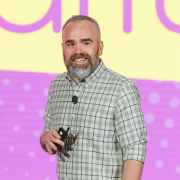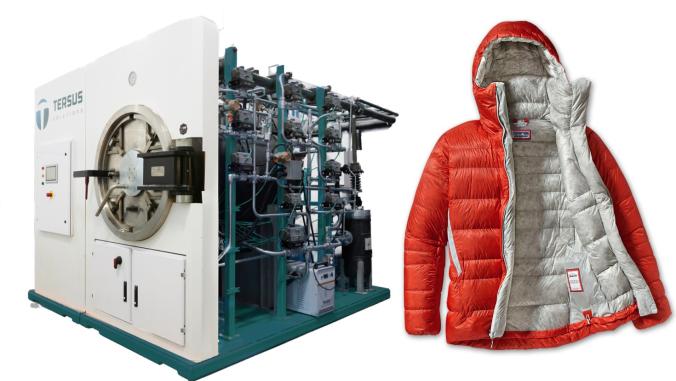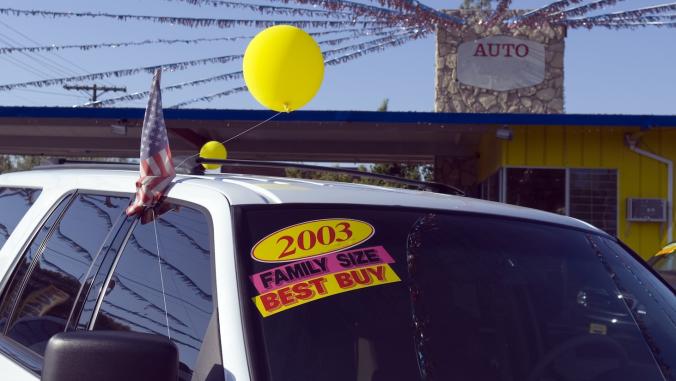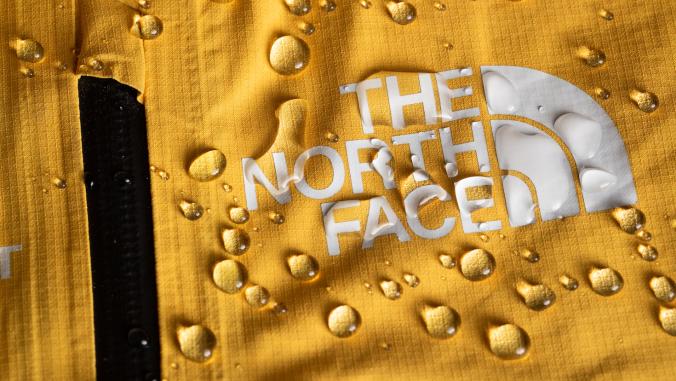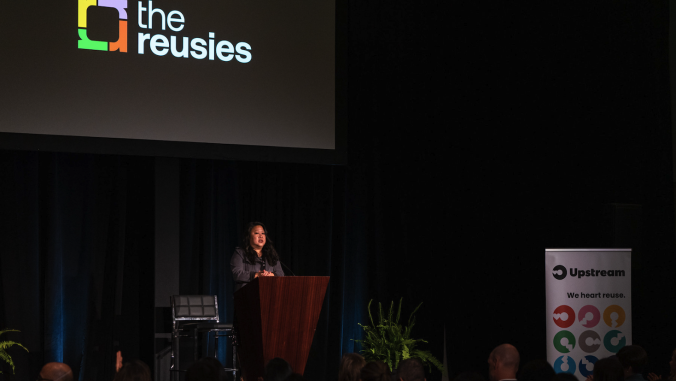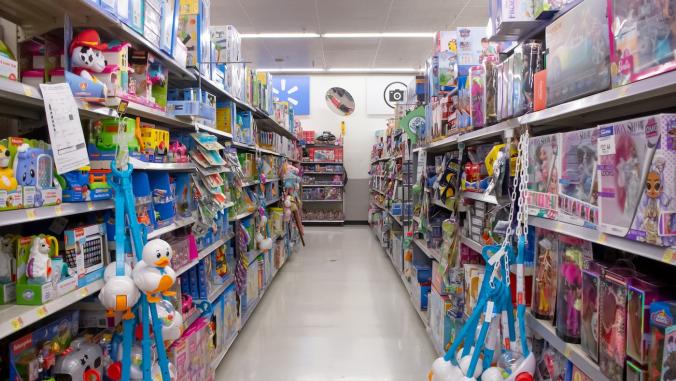Everyone who participates in the modern economy understands that packaging needs to be improved, right?
Honestly, I get frustrated when it takes 10 minutes to get a kid’s toy out of the package. After extraction, I have the pleasure of scrutinizing every component to see if it’s recyclable (note: If I have to examine, it’s usually not recyclable). I don’t even want to think about what the average consumer does with toy packaging. I’m sure it’s horrifying.
Then there are people like the other 600 attendees at the Sustainable Packaging Coalition (SPC) Impact conference, which took place in San Francisco earlier this month. This group of people understands packaging. They know why a bottle of pain reliever is sold in a box even though the bottle protects the contents, and they know why the box of diapers I just ordered comes in another box with air pillows wrapped around it (just kidding, no one understands that. It’s bonkers).
The largest packaging companies and consumer brands — including folks from Unilever, Mars and WestRock, to name a few — descended on San Francisco to talk packaging, and I was lucky enough to be there with them. I hoped to learn from their in-depth knowledge and to hear about the solutions that can lead us to a more circular future. For the most part, I got what I hoped for. I’d like to unpack three points that stand out to me as I reflect on my time at the conference:
- The nexus of food waste and packaging is key to our future
- Recycling and composting are both improving, but have a ways to go
- Packaging has a significant role to play in the fight against climate change
The global food waste challenge is real
According to ReFED, about 35 percent of all food, nearly 80 million tons, in the United States goes unsold or uneaten each year. Most of this food becomes waste that is either landfilled, incinerated, washed down the drain or left in the fields to rot. It is clear that packaging solutions that keep food fresh longer can reduce overall waste in the system.
It was easy to see some discomfort in the room with this discussion, though, as more robust packaging to keep food fresh can often have negative effects on recyclability and can increase the amount of packaging used and the associated environmental impacts. This is clearly a place where the industry sees an innovation opportunity to address trade-offs and develop new solutions.
"Packaging and food waste are often thought of as binary choices — either food is packaged to extend shelf life and prevent food waste, or it is sold loose, which is thought to lead to food waste," said Olga Kachook, director of bioeconomy and reuse initiatives at GreenBlue. "The reality is more complex, because food waste can occur even when products are packaged and designed to have an extended shelf life."

Courtesy of the Sustainable Packaging Coalition.
One innovative company in food waste reduction, Imperfect Foods, is tackling a couple circular economy problems together. They are known for reducing food waste through their model of selling carefully curated groceries that are a little imperfect and would otherwise not make it to the store for sale. It is a cool service, and one that I’ve enjoyed myself.
Where the Imperfect Foods story overlaps with SPC Impact is in their packaging. As you might expect, a national brand shipping food requires sealed boxes, protective packaging and cold packs. Imperfect Foods has gone to great lengths in the last couple of years to address a major annoyance of their customers by making much of their packaging returnable and reusable, and the rest easily recyclable. Because they deliver the product themselves, they are able to pick up packaging during the next delivery so it can be sterilized and reused.
Solutions for recycling and composting
Recycling and composting alone will not build the circular economy, but you can’t build a circular economy without them. It is clear from SPC Impact that the packaging industry knows this. Let’s quickly touch on three points that I heard at the conference.
- Mechanical recycling is very much part of the solution today, and is likely to be for quite some time. The focus is on better collection and separation technologies through innovations such as digital watermarks, artificial intelligence and robotic sorting. This will make the output of the mechanical recycling process higher quality and usable in more applications.
- Advanced recycling methods such as purification, conversion and decomposition are a burgeoning field, but are not to scale right now to meet demand. Christina Boyd, product stewardship engineer at Printpack, had some great insights on this field and how important it is to tear down misconceptions (advanced recycling as a monolith) and build this space for the future.
- Compost facilities are constantly fighting the dual challenges of separating contaminants from organic material and being profitable. Major players in the composting space are starting to employ AI and robotics in their facilities with great early success. Atlas Organics, for example, is employing robots in its San Antonio facility and is confident it’ll be able to get to less than 1 percent contamination over time.
Nina Goodrich, executive director at GreenBlue, is thinking further upstream to an area that’s hard to improve. "I think the focus needs first to be on collection. We are really bad at collecting most materials," she said. "It could take a variety of interventions from policy to incentives."
Goodrich added that recycling technologies need to account for packaging and other waste streams. "Chemical recycling has the power to unlock new streams and once they are chemically recycled into building blocks, they can become new feedstock for a wide range of materials," she said.
Karen Hagerman, director of SPC, added, "There is such great and innovative work across the value chain, but the question of focus is really connecting those dots and harnessing the collective energy and initiative to change the system, so that all the parts can scale at the same time."
Packaging and climate change
While packaging accounts for only a slice of total carbon emissions, there is an acknowledgement within the sector that packaging can have indirect carbon impacts in other sectors and that steps can be taken to decrease the impact further. Peter Spiller, partner at McKinsey, and Ruth Maust, project manager at GreenBlue, addressed these impacts in their decarbonization session. They discussed actions packaging players can take to better serve their customers and how innovation in packaging can help cut greenhouse gas emissions from a number of sectors. They also touched on how reducing packaging waste and use of smart packaging can reduce the impacts of the sector.
Packaging is a consumer’s first interaction with your brand. Don’t overlook that even if it is a small overall impact on your company’s environmental footprint.
The main stage on day one of Impact also featured conversations on carbon. While not all of these presentations were directly related to packaging, the industry could find inspiration and a call to action in the discussions. If participants connected the dots between talks by Justin Freiberg, managing director at Yale Carbon Containment Lab, Matthew Realff, professor at Georgia Tech, and Freya Burton, chief sustainability officer at LanzaTech, they could start to think about how next generation packaging could be manufactured using "waste" carbon feedstocks captured directly from the air.
The team at GreenBlue agrees that climate change and waste reduction should be at the forefront of packaging innovation, and that they can go hand-in-hand. Goodrich made this clear when I asked about carbon emissions. "I would ask, why do we recycle? Why do we want circularity?" she said. "I hope it is because we want to reduce our carbon footprint. I understand there are other valuable reasons but the north star should be carbon."
In fact, GreenBlue’s recently published report, Guidance for Reusable Packaging, makes this argument clearly. Corporate sustainability goals should not be siloed, and efforts towards waste reduction and reuse should be integrally linked to carbon emissions reduction.
In summary
As David Eichberg, global head of climate strategy at HP, said on the main stage at Impact, "Packaging is a consumer’s first interaction with your brand. Don’t overlook that even if it is a small overall impact on your company’s environmental footprint."
If you are a brand, a packaging producer, or basically anyone else in the economy, don’t sleep on packaging. A lot of folks out there are working to innovate in the space and those innovations are needed and overdue.

